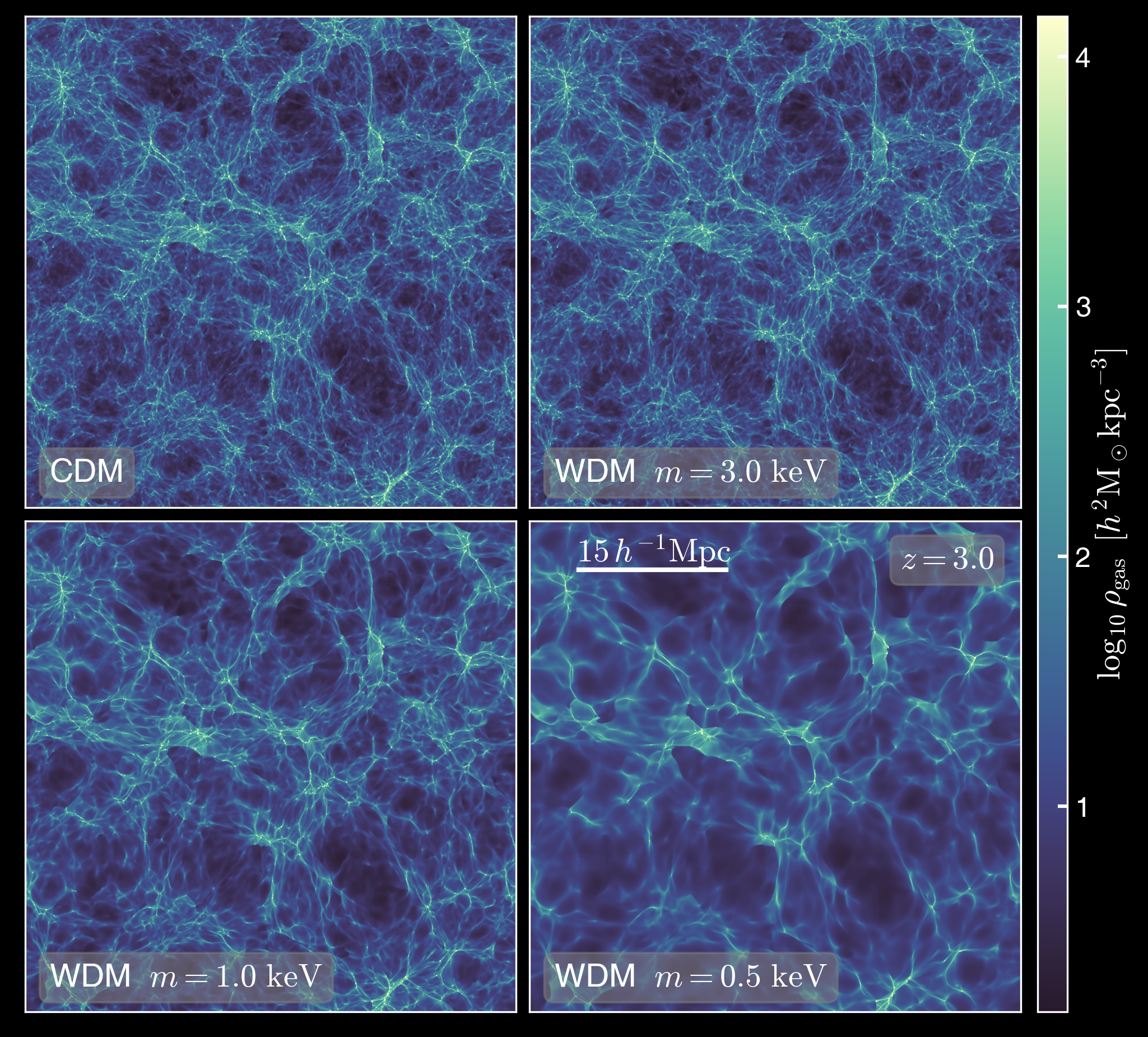Cosmological Simulations
As part of my Ph.D., I extended the GPU hydrodynamics solver CHOLLA to run cosmological simulations by including gravity, dark matter particles, a comoving frame to account for the expansion of the universe, and hydrogen and helium ionization and radiative cooling/heating.
Relevant Projects:
Below are the most relevant projects that I have worked on




